This year I plan to have a regular ‘Plant of the Month’. For February, my standout plant is always Ixodia achillaeoides subsp. alata Ixodia.
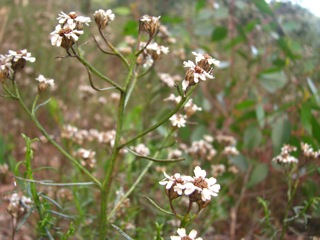
Ixodia
The dense clusters of white, papery, daisy-like flowers shine beautifully in the sun, and form a contrast with the rich-green, narrow leaves.
The only low-growing plant in flower I could find last month was the appealing Pimelea octophylla Woolly Rice-flower, well worth a look with its nodding, fluffy flower-heads.
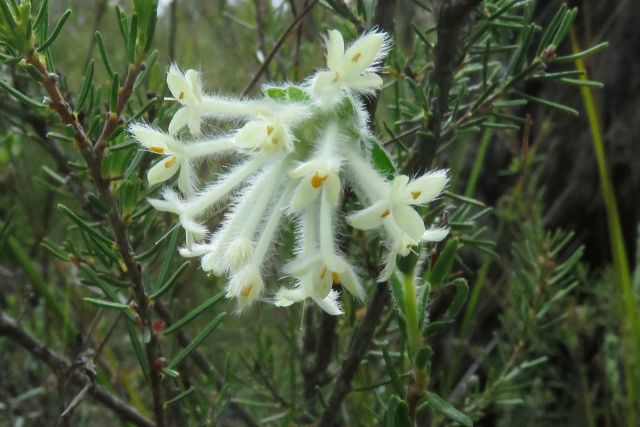
Woolly Rice-flower
I consider that this month it is best to look up rather than down, as several of our taller trees and bushes will be in flower. After all these years of learning about our plants, I have only just discovered the flowers of Eucalyptus obliqua Messmate.
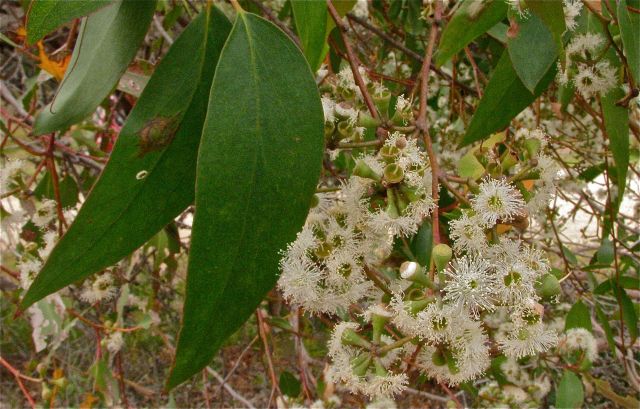
Messmate
The abundant clusters of cream flowers are really Snugglepot and Cuddlepie cream cuties; they also have a nice scent and are very attractive to birds.
Our iconic Melaleuca lanceolata Moonah, with its small, creamy-white, bottle-brush-like flowers, is always good to see in late summer.
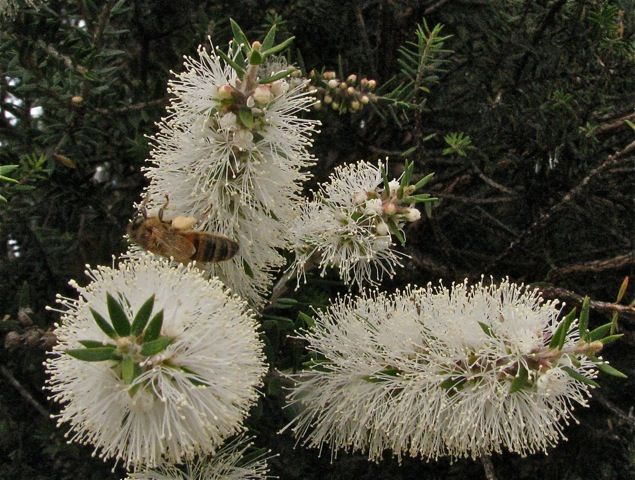
Moonah
A favourite of mine is the usually unappealing, spiky Bursaria spinosa subsp. spinosa, Sweet Bursaria, a common plant, growing to about two metres in height.
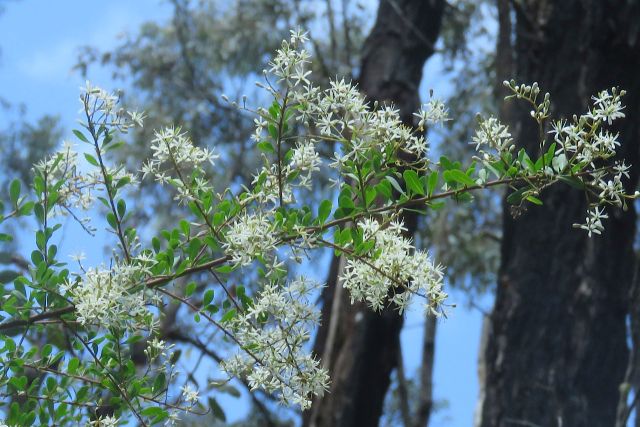
Sweet Bursaria
It has terminal panicles of fragrant, creamy, star-like flowers, which attract a range of insects – a delight to watch on hot summer days.
Two large shrubs, which often confuse people with their similar foliage and flowers, are both in flower over the summer period. Ozothamnus ferrugineus Tree Everlasting, the less spectacular of the two, has masses of flower, with tiny, scented, white flowers in rounded clusters.
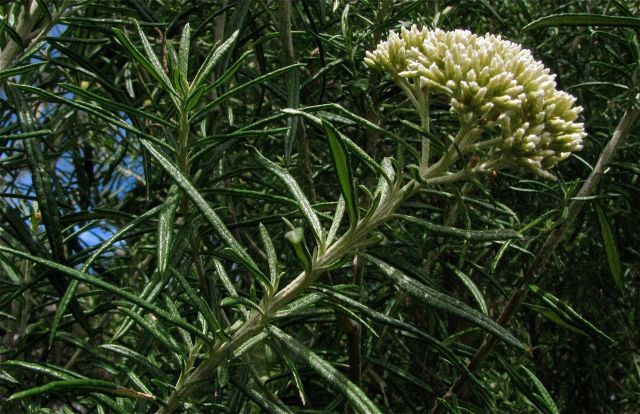
Tree Everlasting
Cassinia aculeata Common Cassinia, has tiny, white flower-heads, which can be domed, but have a flatter look than the blossoms of Tree Everlasting, and finer leaves with rolled-under margins.
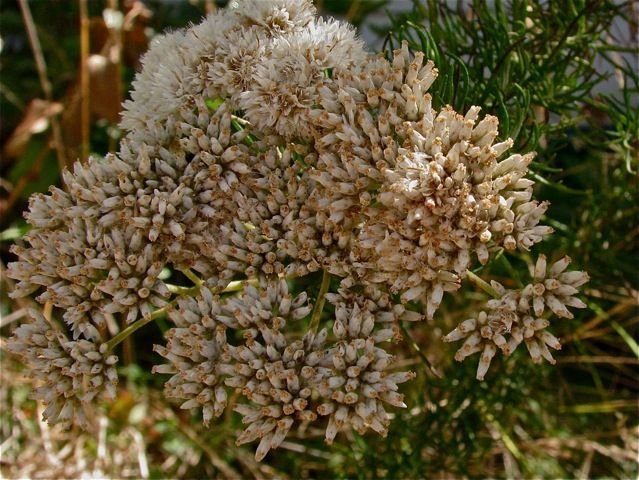
Common Cassinia
Look out for the small seeds forming on some of our plants after their spring and early summer flowering. Leucopogon parviflorus Coast Beard-heath, a common coastal bush, has had copious numbers of small, white, sweet seeds.
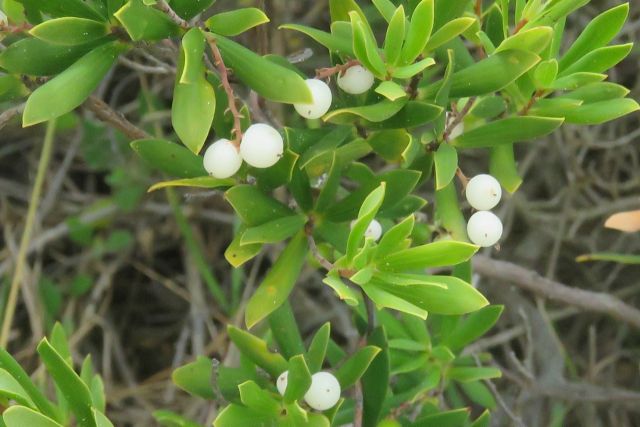
Coast Beard-heath
Coprosma quadrifida Prickly Currant-bush, a shrub found in moist forest woodland, has small, eye-catching, red berries.
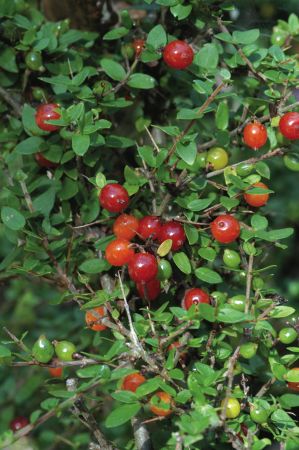
Prickly Currant-bush
Einadia nutans subsp. nutans Nodding Saltbush currently has clusters of tiny, but quite gorgeous, bright-red to orange berries. It also has unusual arrow-shaped leaves, which can be quite variable in size.
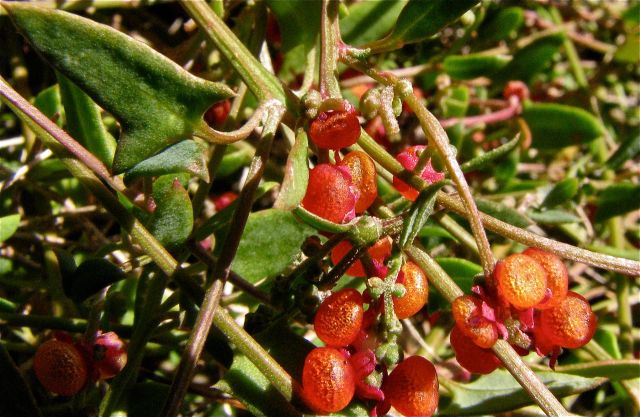
Nodding Saltbush
Of course, remember to take your Flowers of Anglesea and Aireys Inlet when you walk in the heath.
Ellinor Campbell